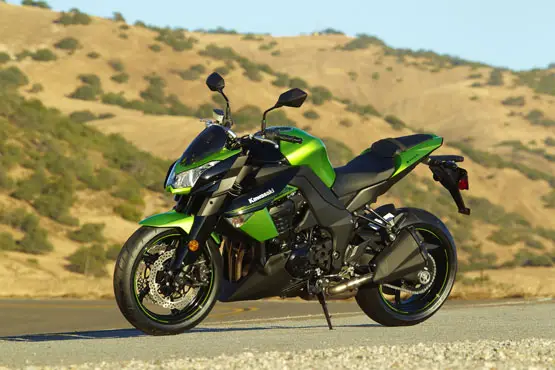
Back to 2011 Kawasaki Motorcycle Index Page
Click photos to enlarge.
They make great desktop images.
– 2011 Kawasaki Z1000
2011 Kawasaki Z1000
Naked Bike? Super Standard? Modern UJM? Who Cares What It’s Called: The Futuristically Retro and Super-fast Z1000 Is an Absolute Blast to Ride
It’s a rare thing: a new from the ground up motorcycle that feels so right and works so well right out of the crate that it has the press swooning and owners crooning. These well-sorted but rare bikes are often described as “happy motorcycles,” and it’s become crystal clear during the last year that Kawasaki’s Z1000 – completely redesigned in 2010 – is a very happy machine. It’s a realization that comes after just a mile or two in the saddle, and it’s one that confirms the fact that this motorcycle’s design team worked a special bit of magic during development.
The Z1000 thrills before you even jump aboard, with some of motorcycling’s most rakishly stunning lines and body shapes. The aesthetic showcase begins with a low-mount front cowl that slopes back radically, highlighting the Z’s prow and, behind it, an adjustable instrument cluster featuring a multifunction LCD display covered by a trick-looking orange lens. The headlight represents Kawasaki’s first-ever use of a line-beam unit, the guts of which are integrated nicely into that angled cowl. Moving rearward, you come to a shapely fuel tank that’s flared on the sides to let you grab it with your knees and that’s trim at the back for a snug fit. The seat is low and narrow at the front to make ground contact easy, and flows beautifully rearward to end in a futuristically retro LED taillight behind a red lens. It’s a thoroughly athletic shape, one sure to garner attention wherever it’s ridden.
Totally redesigned just last year, the Z features a wide range of new-think moto technology, including an aluminum frame similar to the ZX™-10R’s that curves over the engine, cradling it from above. The design allows a narrow mid-section, which fosters a high degree of rider comfort and feedback in addition to keeping weight low and chassis rigidity high. The engine bolts solidly to the frame in three places, stressed-member-style, and there’s also a rubber mount at the upper rear crankcase area for added vibration damping and torsional rigidity. The main frame and swingarm pivot elements are cast as a single unit, with welds eliminated wherever possible for a more aesthetically pleasing look. And the subframe is a lightweight aluminum die-casting, which is light, smooth and beautiful.
Suspension at both ends is thoroughly modern and wickedly functional: a beefy, fully adjustable 41mm inverted fork up front and a spring preload and rebound damping adjustable horizontal back-link shock is mounted above the swingarm to shield it from exhaust heat and foster an added degree of mass centralization. Wheel control is simply superb, and the substantial feedback sent to the rider makes it easy to know exactly what’s going on at the bike’s contact patches.
The heart of every naked bike is its engine, so Kawasaki engineers paid special attention here for maximum, arm-straightening impact: Dual cams. Sixteen valves. 1,043cc. Liquid cooling. High compression. A long stroke – 56mm – for instantaneous thrust. Six speeds. And digital fuel injection. It’s all there.
The result? This inline-four packs impressive horsepower combined with the sort of flexible, mid-range-heavy power delivery that pastes a silly grin on the face of anyone lucky enough to be aboard. From nearly any rpm, rolling the Z1000’s throttle provides the kind of instant gratification most sportbikes just can’t quite muster, all with silky smooth, highly intoxicating response.
There’s more, of course. Check out the Z’s five-spoke wheels, with spokes machined near the rims for a custom look. We carried forward the quad-pipe theme from the last Z1000 (and the first Z-1), but an under-engine pre-chamber lets engineers use shorter mufflers for great looks and better mass centralization. A solid-mount handlebar and aluminum footpegs lifted from the Ninja® ZX-10R contribute to the Z1000’s quality, top-shelf feel. Brakes? Totally modern: Radially mounted calipers, Ninja-spec 300mm petal-type rotors and a radial-pump master cylinder all provide the latest in braking feel and feedback.
Conventional wisdom says many of today’s motorcycles lack soul, or are all too much alike. The Z1000 proves otherwise – and happily.
Authentic Kawasaki Accessories are available through Kawasaki dealers.
2011 Kawasaki Z1000 motorcycle model Features
Key Features
– 1,043cc inline-four with DFI produces a massive amount of torque
– Lightweight aluminum frame specifically designed for the Z1000
– Fully adjustable inverted front fork with settings designed for sporty performance
– Horizontal rear monoshock features stepless rebound damping and spring preload adjustability
– Radial-mounted four-piston front brake calipers and radial-pump front brake master cylinder combine with 300mm discs to provide superior stopping power
– Digital instrument panel tilts to accommodate different viewing angles
– Aggressive styling makes a bold fashion statement
DOHC, 16-valve 1,043cc Engine
– Liquid-cooled inline-four offers substantial power at all rpm levels, providing effortless acceleration in almost any situation
– Bore and stroke dimensions of 77.0 x 56.0 mm offer the best possible balance of peak power and low- and mid-range flexibility
– 38mm downdraft throttle bodies allow intake air to travel to the engine in the shortest possible distance
– Oval sub-throttles help keep the engine slim – a good thing since the throttle bodies are positioned between the rider’s knees
– Soft rev limiter provides good overrev character; power doesn’t drop off suddenly at high rpm
– The crankshaft is positioned low in the crankcase assembly to allow a longer stroke without adding engine height
– A secondary balancer, driven off a gear on the sixth web of the crankshaft, eliminates excess vibration
Cool Air System
– The intake system routes cool air to the airbox from ducts above the radiator shrouds, minimizing performance loss due to heated intake air
– Positioning the ducts close to the rider allows the intake sound to be heard – and enjoyed – by the rider
– A resonator inside the airbox reduces noise at low rpm, and enhances intake sound at high rpm
Exhaust System
– The exhaust system features a 4-into-2-pre-chamber-into-2 layout. Silencer end-caps maintain the quad-style image
– Main and pre-catalyzers provide cleaner emissions
– Thanks to the under-engine pre-chamber, silencer volume is reduced, and silencer weight is low. Exhaust system offers excellent mass centralization and contributes to a low center of gravity
Fuel Tank
– Slim-type fuel pump features an integral fuel gauge
– Fuel tank design and slim-type fuel pump minimizes unused volume inside the tank; fuel capacity is 4.0 gallons
Aluminum Backbone Frame
– Aluminum backbone frame designed specifically for the Z1000 (and similar in concept to the Ninja® ZX™-10R’s) helps make the bike narrow and easy to grip with the knees for maximum rider comfort and feedback
– Lightweight and highly rigid, the frame uses the engine as a stressed member for a firm, planted feeling and enhanced stability
– Frame is tuned to transmit the ideal level of engine feedback directly to the rider
– The frame’s five-piece construction consists of steering stem, left and right main frames, and two cross pieces. The two main frame components have open C-shaped cross sections
– As much as possible, welds were eliminated for simplicity and appearance. The frame beams and swingarm brackets are now single die-cast pieces
– The frame uses four engine mounts; three mounts are rigid, while the upper rear crankcase mount is rubber
– The rear sub-frame is a three-piece aluminum die-casting construction, which is light, strong and optimizes mass centralization
– The sub-frame is an example of form and function combined, negating the need for side covers and allowing underseat narrowness for a shorter reach to the ground
Horizontal Rear Monoshock
– Rear suspension design positions the shock unit and linkage above the swingarm where it’s less exposed to exhaust heat and contributes to mass centralization
– Visible from the outside, the horizontal monoshock contributes to the Z1000’s aggressive appearance
– Linkage characteristics are the same as those of a standard Uni-Trak® rear suspension: Wheel movement versus shock stroke is the same ratio
– The shock features stepless rebound damping and spring preload adjustability
Fully Adjustable Fork
– The Z1000’s 41mm inverted fork is adjustable for compression damping, rebound damping and spring preload – and is protected from harm by a cool-looking shroud
– Settings are designed for both sporty performance and excellent comfort
Handlebar, Grips and Footpegs
– The tubular handlebar is rigid mounted, contributing to sharp, direct handling
– A wide, flat bend handlebar offers a design similar to those on off-road bikes for excellent control
– Tapered-type grips, like those used on supersport models, offer a more direct feel
– Ninja ZX-10R-style footpegs with knurled surfaces offer good grip, direct feel and control, and no-nonsense looks
– The passenger footpeg brackets incorporate convenient luggage hooks
Brakes
– The Z1000’s 300mm front petal-style brake discs are gripped by opposed four-piston radial-mount calipers. (Caliper piston size is 4×30 mm)
– A radial-pump front brake master cylinder contributes to the superb control and feel offered by these high-end calipers
– The rear brake is a single piston, pin-slide caliper gripping a 250mm petal-style disc. The caliper is mounted below the swingarm, and located by a torque rod
Instrumentation
– A distinctive tilting instrument panel with multifunction LCD display behind an orange lens covers all systems
2011 Kawasaki Z1000 motorcycle model Technology
Overview
TAILOR-MADE SUPER NAKED
In order to deliver an “excitement” never before experienced with Super Naked models, development of the new Z1000 started from scratch – essentially resulting in a Tailor-made Super Naked.
1. VISUAL IMPACT
Unlike the “mono-form” design of supersport models (where the ensemble is designed as a single piece), Kawasaki naked model designs are collections of parts – each meticulously crafted as both stand-alone components, and as parts of a whole. While contemporary Super Naked models are often no more than supersport models with the fairings removed, the new Z1000 realises a stunning VISUAL IMPACT by being conceived in complete design freedom.
Conceived in complete design freedom for a completely unique appearance. Each part of the new Z1000 was meticulously designed with a dual role in mind: Individual functionality, and realization of a condensed, mass-forward image.
While the 2007 Z1000 took the avant-garde design of its predecessor and made it sharper and more aggressive, both models can still be said to have conventional designs.
In addition to individual functionality, each part of the 2010 Z1000 was designed to draw volume (and mass) away from extremities and toward the centre. The resultant condensed, mass-forward image gives the new Z1000 a more powerful, dynamic design.
2. RIDING IMPACT
Supersport-based engines and chassis offer high performance, but the number of riders who are able to enjoy this performance on the street is limited.
Rather than pursuing “speed” and performance figures, Z1000 development focused on the “excitement” derived from riding a sport bike on the street, thereby achieving a high RIDING IMPACT.Ride with “IMPACT” at any time, in any situation
New engine: designed to offer increased feeling of “acceleration”
Liquid-cooled, DOHC, 16-valve 1,043 cc In-line Four offers a greater power output (138 PS) and stronger torque than that of the previous Z1000.
Completely new engine.
Bore and Stroke chosen to achieve desired engine character.
Development Goals:
WILD engine character
Sharp throttle response
High-rpm Power and Sound of an In-line Four
Intoxicating intake howl care of new Cool Air system
Cool Air System
New system uses ducts to direct fresh (cool) air into the air cleaner. Positioning the ducts close to the rider allows the intake sound when accelerating to be enjoyed.
New chassis: designed to maximize enjoyment of sport riding on the street The new aluminium twin-tube frame was designed specifically for the 2010 Z1000. Similar in concept to the frame of the Ninja ZX-10R, the frame beams go over the engine (on a supersport model the frame beams would be much stiffer),
Rigidity of the main frame was increased; engine mounts increased from 3 to 4.
Using the engine as a stressed member contributes to direct handling.
Using lightweight aluminum for the frame (previously steel) contributes to sharp handling.
Slim, compact twin-tube frame design contributes to ergonomics.
Slim, compact backbone twin-tube frame design contributes to ergonomics
Uniting the main frame and swingarm pivot area contributes to high-quality finish. (welds eliminated)
Features for high level of control
Handlebar
– Wider and moved slightly further and higher. New position contributes to the rider’s freedom of movement.
– Fat-type handlebar contributes to tough appearance.
Seat height
– Lowered approximately 5 mm. Slightly narrower thanks to the new frame; this contributes to the rider’s freedom of movement.
Footpegs
– Aluminum footpegs from the Ninja ZX-10R with machined edges contribute to the direct feel.
Front brakes
– Radial-mount calipers and a radial-pump master cylinder deliver superb braking performance and precise brake control.
Front suspension with compression adjustability
– Compression damping adjustability added. Settings chosen to deliver light handling.
Thorough mass centralization contribute to light, sharp handling
KEY MASS-CENTRALIZING COMPONENTS
Short silencers & pre-chamber
New rear suspension positions the shock unit and linkage above the swingarm.
Downdraft throttle bodies
Aluminum rear frame
Ignition key cylinder
Brakes and WheelsBrakes
At the front, the Z1000’s 300 mm petal brake discs are gripped by opposed 4-piston radial-mount calipers. Caliper piston size is 30 mm.
Radial-pump front brake master cylinder also contributes to the superb control and feel offered by the new calipers.
Swingarm features eccentric axle adjusters, contributing to the Z1000’s Kawasaki identity.
The caliper is mounted below the swingarm and features a torque rod. The arrangement adds a racy image.
Tires
New tires contribute to Z1000’s nimble handling.
ZR1000D: Dunlop D210
Tire sizes are unchanged from its predecessor.
F: 120/70ZR17M/C (58W)
R: 190/50ZR17M/C (73W)
Chassis
VISUAL IMPACT
The new Z1000 takes the aggressive styling of its predecessor a step forward. From the sharply sloped front cowl design made possible with the slim new line-beam headlamp, to the minimalist tail section, the new Z1000 presents a very condensed, mass-forward image. This dynamic design is reinforced by the front fork covers and wide shrouds adorned with intakes for the new Cool Air system. Where its predecessor formed the image of an athlete poised to explode out of the blocks, the new Z1000 gives the appearance of a dangerous predator feigning sleep – though no less ready to leap forward without a moment’s hesitation.
Condensed, Mass-forward Image for Dynamic Design
Sharp front cowl slopes back at an acute angle, contributing to the aggressive design and the image of a low, forward-located centre of gravity.
In addition to protecting the inverted fork’s inner tubes, fork covers reinforce the low, mass-forward image.
Slim, compact line-beam type headlamp (first use on a Kawasaki) allowed the design freedom to make the front cowl smaller. Locating the bulbs slightly higher in the headlamp unit gives the Z1000 a fierce look when viewed from the front.
Ignition key cylinder was relocated to the front of the tank (previously forward of the handlebar), allowing the instrument panel to be positioned closer to the rider for enhanced visibility. Relocating the key cylinder away from the instrument panel also helped make possible the compact front cowl. Moving the key cylinder closer to the rider also contributes to mass centralization.
Dynamic fuel tank design features supersport-style flared edges with a trim shape at the rear, a shape that is easy to grip with the knees. Concentrating the tank’s volume toward the rear helped make room for the repositioned key cylinder. Steel construction facilitates the use of magnetic tank bags
Voluminous shrouds with integrated turn signals contribute to the new Z1000’s concentrated, massforward design.
Sharp under-cowl adds to the image of a low centre of gravity and reinforces the mass-forward design.
Minimalist tail cowl is slimmer and more compact, moving mass both physically and visually away from the rear and toward the front.
LED taillight design, reminiscent of the original Z1000’s, features red LED bulbs and a transparent lens.
Quad-style muffler maintains a key design element from previous models. While overall exhaust system weight is about the same when the pre-chamber is included, the new system offers much better mass centralization and contributes to a lower centre of gravity.
New 5-spoke cast wheels compliment the Z1000’s sharp design. The spokes are machined near the rim edge (the machined portions receiving a clear coat), adding to the high-quality appearance. The machined cut-outs were purposely designed to point in the wrong direction, a design element also visible on the new engine covers.
Tilting Instrument Panel
Fully digital instrument panel features an eye-catching orange lens.
The instrument panel can be angled to suit rider preference. Riders can choose from three positions. Angle can easily be changed without tools using an adjuster knob on the left side.
Meter functions include digital speedometer, bar-style digital tachometer, odometer, two trip meters, fuel gauge, and clock.
Details
Swingarm features eccentric axle adjusters, contributing to the Z1000’s Kawasaki identity.
Unnecessary material trimmed from the rear flap to give it a light look.
RIDING IMPACT: CHASSIS
To deliver a high riding impact, Kawasaki engineers wanted a quick-steering and light-handling package. An all-new aluminum frame with 30% more rigidity, increased mass centralization, using the engine as a stressed member, and a new rigid-mount handlebar all contribute to sharper, firmer handling. A new tank and sub-frame offer a slim riding position, and a number of other changes offer increased control.
All-new Aluminum Twin-tube Frame
The new aluminium twin-tube frame was designed specifically for the 2010 Z1000. Similar in concept to the frame of the Ninja ZX-10R, the frame beams go over the engine (on a supersport model the frame beams would be much stiffer), allowing a narrow construction that is easy to grip with the knees .
Lightweight and highly rigid, the frame uses the engine as a stressed member. Torsional rigidity is up about 30%; lateral stiffness is about the same. The frame itself is approximately 3-4 kg lighter.
Handling is improved, offering a firmer, more planted feeling, and stability is enhanced. The new frame offers firmer handling and enhanced stability.
The frame beams and swingarm brackets are now single die-cast pieces. The new frame is a 5-piece construction, consisting of steering stem, left and right main frames, and two cross pieces. The two main frame components have open C-shaped cross sections.
As much as possible welds were eliminated, offering an improved appearance.
The new frame uses 4 (instead of 3) engine mounts. All engine mounts are rigid except the upper rear crankcase mount, which is rubber. The increased rigidity (also due to using the engine as a stressed member) contributes to lighter, firmer handling while maintaining stability.
Feeling from the engine is also transmitted more directly to the rider.
The rear sub-frame, previously two steel pieces (left/right) welded to the frame, is now a 3-piece aluminium die-cast construction. The new sub-frame weighs less, contributing to mass centralization.
The sub-frame is an example of form and function combined, allowing the side covers to be eliminated. This also allows the width under the seat to be narrower, offering riders a shorter reach to the ground.
Mass Centralization
The new exhaust system (with shorter silencers and pre-chamber), Horizontal Back-link rear suspension and the use of downdraft throttle bodies are the greatest contributors to mass centralization.
The new aluminum sub-frame and repositioned key cylinder also contribute. The result is lighter, sharper handling. Turn-in is light. Steering is neutral after the bike has been leaned over. The bike is stable mid-corner. And the bike goes where you want it to.
Fully Adjustable Front Fork
With the addition of compression damping adjustability, the Z1000’s 41 mm inverted front fork is now fully adjustable.
Settings offer both sporty performance (contributing to light handling on the street and in the hills) and comfort.
Fat-type Handlebar, Grips & Pegs
New handlebar is rigid-mount, contributing to the sharper handling.
The handlebar is thicker at the centre (28.6 mm), tapering to 22.2 mm at the grips.
Revised position is slightly wider (23 mm), slightly further (14 mm) and slightly higher (7 mm). The revised position and a flatter bend offer a design similar to handlebars of off-road bikes, facilitating control.
The new handlebar also looks tough, contributing a touch of badboy image to the Z1000’s appearance.
Tapered-type handle grips (like those used on supersport models) offer more direct feel.
Ninja ZX-10R-style footpegs with knurling offer good grip, more direct feel and control, and also contribute to the sporty look.
Tandem footpeg-stays incorporate convenient luggage hook
Front and Rear Seats
Seat height is approximately 5 mm lower, and the seat could be made slimmer thanks to the new subframe. The result is an easier reach to the ground.
Compact passenger seat matches the design of the Z1000’s tail section.
Engine
RIDING IMPACT: ENGINE
To maximize impact, the engine needed to deliver more than just performance figures.Riding impact is about the sensation the rider feels. Engineers wanted to offer superb throttle response, power delivery with a hit in mid-range, and a seductive intake howl with just the right amount of engine vibration to make accelerating an exhilarating experience.
All-new Engine
Liquid-cooled, DOHC, 16-valve 1,043 cc In-line Four offers a greater power output (138 PS) and stronger torque than that of the previous Z1000. The new displacement was chosen with the desire to maintain the Z1000 name.
Bore and stroke of 77.0 x 56.0 mm were chosen to achieve the desired engine character. Compare this to the bore and stroke of the 2008 Z1000 and 2009 Ninja ZX-10R:
2008 Z1000 – 77.2 x 50.9 mm
2009 Ninja ZX-10R – 76.0 x 55.0 mm
A bore slightly smaller than that of its predecessor, but larger than that of the Ninja ZX-10R, and a stroke longer than both of these result in an engine very strong in the everyday rpm range most used by Super Nakeds.
Oval sub-throttles help keep the engine slim – this is important since the throttle bodies are now positioned between the rider’s knees.
Power delivery is quite linear, but the engine spins up noticeably faster from about 7,000 rpm onwards. Silky smooth response from mid-high rpm ensures excellent driveability.
Crankshaft and transmission shafts are arranged in a straight line (compared to the Ninja ZX-10R, which uses a triangular layout). This maintains the design from the 2008 Z1000, an engine design we felt offers the best look for a Super Naked model.
Crankshaft was lowered to allow for the longer stroke without adding engine height. The shaft line, which was horizontal on the 2008 Z1000, is angled 5o down. Thus, engine size is about the same despite the 90 cc displacement increase.
Downdraft throttle bodies allow intake air to travel to the engine in the shortest possible distance, offering improved performance. While downdraft throttle bodies often use short intake funnels to maximize high-rpm performance, the Z1000’s are longer to offer the best Super Naked power characteristics.
Throttle bore is ø38 mm (2008 Z1000 was ø36 mm), chosen to offer the ideal low-mid range response.
Good over-rev characteristics mean that power does not drop off suddenly at high rpm.
Engine tuning is focused on the feeling the rider gets when opening the throttle. There is a much greater feeling of torque (set at the maximum level before the rear wheel starts spinning). Get on the gas at any rpm and the engine pulls strongly – although the feeling is more like being propelled forward.
A secondary balancer, driven off a gear on the 6th web of the crankshaft, eliminates excess vibration. Of course, a certain amount of engine vibration was desired as part of the bike’s character (vibration contributes to the feeling of acceleration, increasing linearly with rpm), so vibration was not totally eliminated. However, adding the secondary balancer enabled the changes to the chassis for improved handling (With the chassis changes, the vibration transmitted to the rider is about the same as the 2008 Z1000)
Cool Air System
With the airbox nestled between the frame rails, intake air is more affected by engine heat.
The Cool Air system routes cool air to the airbox from ducts above the shrouds, minimizing performance loss due to heated intake air. This should not be confused with Ram Air, where force-fed air becomes pressurized in the airbox.
Positioning the ducts close to the rider allows the intake sound to be enjoyed by the rider.
A resonator inside the airbox reduces noise at low rpm, and enhances intake sound at high rpm.
Exhaust System
The exhaust system features a 4-in-to-2-pre-chamber-into-2 layout. Silencer end-caps maintain the quad-style image.
Main and pre-catalysers ensure emissions are clean.
An exhaust device is located upstream of the right-side silencer.
Thanks to the under-engine pre-chamber, silencer volume was reduced from 4.5 litres to 3 litres each. The silencers are also lighter (5,100 g >> 3,500 g each) . While overall exhaust system weight is about the same when the pre-chamber is included, the new system offers much better mass centralization and contributes to a lower centre of gravity.
Fuel Pump
Slim-type fuel pump features a unitised fuel gauge.
With the revised fuel tank design and the slim-type fuel pump, dead volume inside the tank is minimized.
Total volume Usable volume
2008 Z1000 18.5 litres 17 litres
2010 Z1000 15.5 litres 15 litres
Suspension
Horizontal Back-link
New rear suspension positions the shock unit and linkage above the swingarm.
This locates the suspension far enough from the exhaust that operation will not be affected by heat.
The new arrangement contributes to mass centralization.
Visible from the outside, the back-link Horizontal Back-link contributes to the appearance of the new Z1000.
The new rear suspension eliminates the external reservoir tank, however performance is the same or better than that of the 2008 Z1000.
Linkage characteristics are the same as those of a standard Uni-Trak rear suspension: linkage ratios were set such that rear wheel movement vs shock stroke is the same as would be with Uni-Trak rear suspension.
As before, the rear shock features rebound and preload adjustability.
2011 Kawasaki Z1000 – USA Specifications
MSRP: $10,599 USD
Engine: Four-stroke, liquid-cooled, DOHC, four valves per cylinder, inline-four
Displacement: 1,043cc
Bore x stroke: 77.0 x 56.0mm
Compression ratio: 11.8:1
Fuel injection: DFI® with four 38mm Keihin throttle bodies, oval sub-throttles
Ignition: TCBI with digital advance
Transmission: Six-speed
Final drive: X-ring chain
Rake / trail: 24.5 degrees / 4.1 in.
Frame type: Aluminum Backbone
Front tire: 120/70 ZR17
Rear tire: 190/50 ZR17
Wheelbase: 56.7 in.
Front suspension / wheel travel: 41 mm inverted cartridge fork with stepless compression and rebound damping, adjustable spring preload / 4.7 in.
Rear suspension / wheel travel: Horizontal monoshock with stepless rebound damping, adjustable spring preload / 5.4 in.
Front brakes: Dual 300mm petal-type rotors with radial-mount four-piston calipers
Rear brake: Single 250mm petal-type rotor with single-piston caliper
Overall length: 82.5 in.
Overall width: 31.7 in.
Overall height: 42.7 in.
Seat height: 32.1 in.
Curb weight: 481 lbs.
Fuel capacity: 4.0 gal.
Color choices: Candy Lime Green / Ebony, Ebony
Warranty: 12 Months
2011 Kawasaki Z1000 – Canada Specifications
MSRP: $13,199.00 CDN
ENGINE
Type Liquid-cooled, 4-stroke In-Line Four
Displacement 1,043 cc
Bore and Stroke 77.0 x 56.0 mm
Compression Ratio 11.8:1
Valve System DOHC, 16 valves
Fuel System Fuel injection: ø38 mm x 4 (Keihin) with oval sub-throttles
Ignition Digital
Starting Electric
Lubrication Forced lubrication, wet sump
DRIVETRAIN
Transmission 6-speed, return
Final drive Sealed chain
Primary Reduction Ratio 1.627 (83/51)
Gear Ratios: 1st 2.600 (39/15)
2nd 1.950 (39/20)
3rd 1.600 (24/15)
4th 1.389 (25/18)
5th 1.238 (26/21)
6th 1.136 (25/22)
Final Reduction Ratio 2.800 (42/15)
Clutch Wet multi-disc, manual
FRAME
Type Aluminium twin-tube
Wheel Travel: Front 120 mm
Wheel Travel: Rear 138 mm
Tires: Front 120/70ZR17M/C (58W)
Tires: Rear 190/50ZR17M/C (73W)
Caster (Rake) 24.5°
Trail 103 mm
Steering angle (left/right) 31° / 31°
SUSPENSION
Front: Type 41 mm inverted fork with stepless compression and rebound damping and spring preload adjustability
Rear: Type Horizontal Back-link, gas-charged, with stepless rebound damping and spring preload adjustability
BRAKES
Front Type Dual semi-floating 300 mm petal discs
Front Calipers Dual radial-mount, opposed 4-piston
Rear Type Single 250 mm petal disc
Rear Caliper Single-piston
DIMENSIONS
Overall Length 2,095 mm
Overall width 805 mm
Overall height 1,085 mm
Wheelbase 1,440 mm
Ground clearance 140 mm
Seat Height 815 mm
Curb mass 218 kg
Fuel Capacity 15.5 litres
Fuel Consumption 5.8 L/100 km (49 MPG)
PERFORMANCE
Maximum Power 101.5 kW {138 PS} / 9,600 rpm
Maximum Torque 110 N·m {11.2 kgƒ·m} / 7,800 rpm
DETAILS
MSRP* $13,199
Colour Candy Lime Green / Ebony
Warranty 12 months
ADDITIONAL COST OPTIONS
Good Times Protection Plan 24 or 36 months (Kawasaki GTPP coverage begins after the standard limited warranty expires)
* The Manufacturer’s Suggested Retail Price does not include freight, pre-delivery inspection or applicable taxes. The final price is at the discretion of the dealer. Prices and Specifications are subject to change without prior notice.
The specifications mentioned here apply to and have been achieved by production models under standard operating conditions. We intend only to give a fair description of the vehicle and its performance capabilities but these specifications may not apply to every machine supplied for sale. Kawasaki Heavy Industries, Ltd. reserves the right to alter specifications without prior notice. Equipment illustrated and specifications may vary to meet individual markets. Available colours may vary by market.




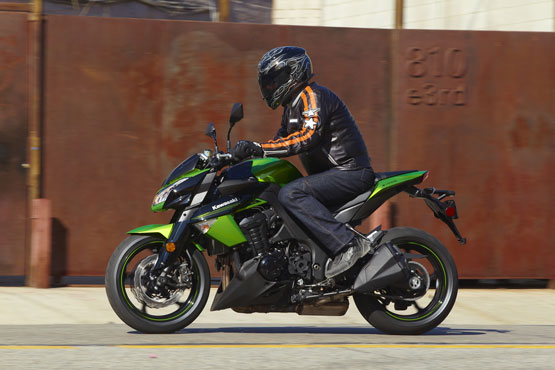

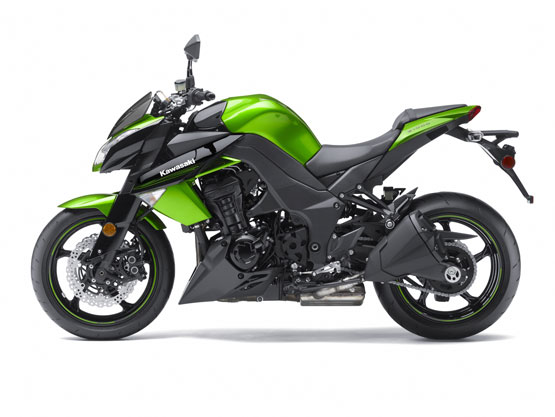
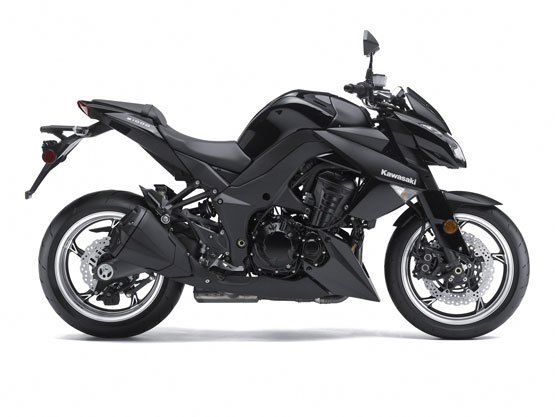
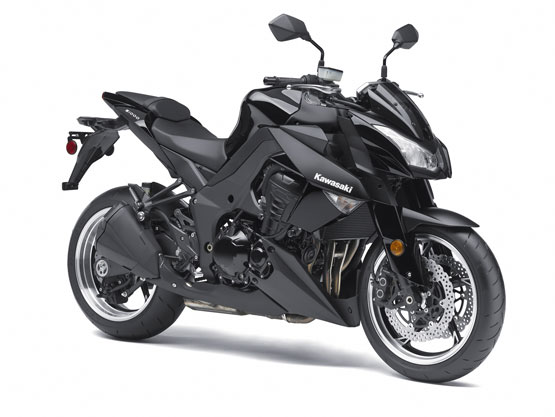
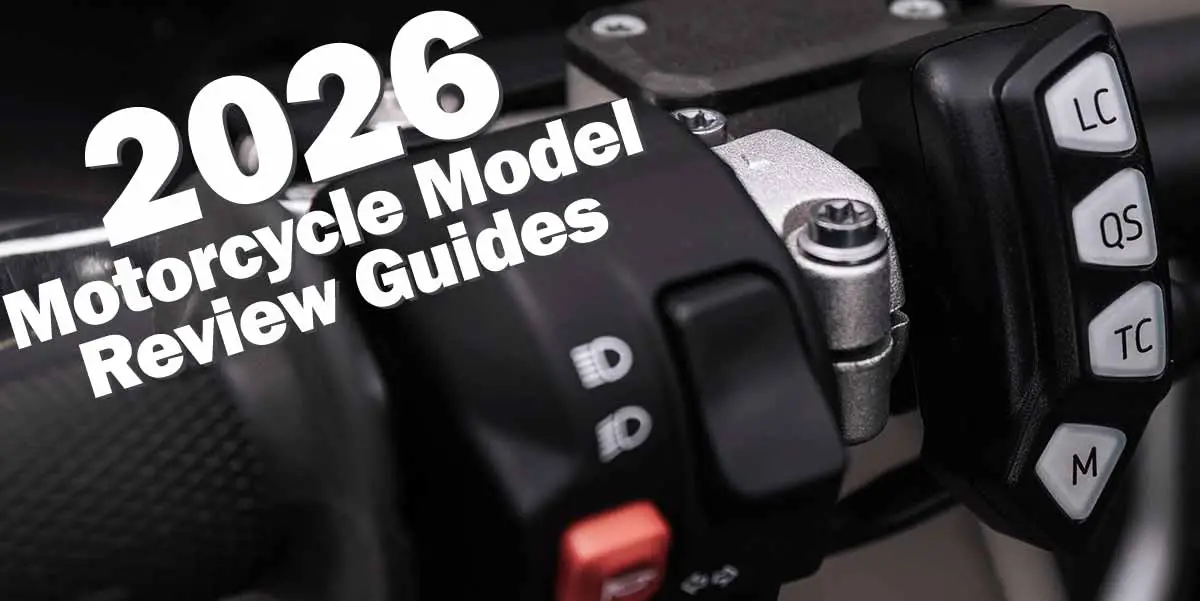
Be the first to comment